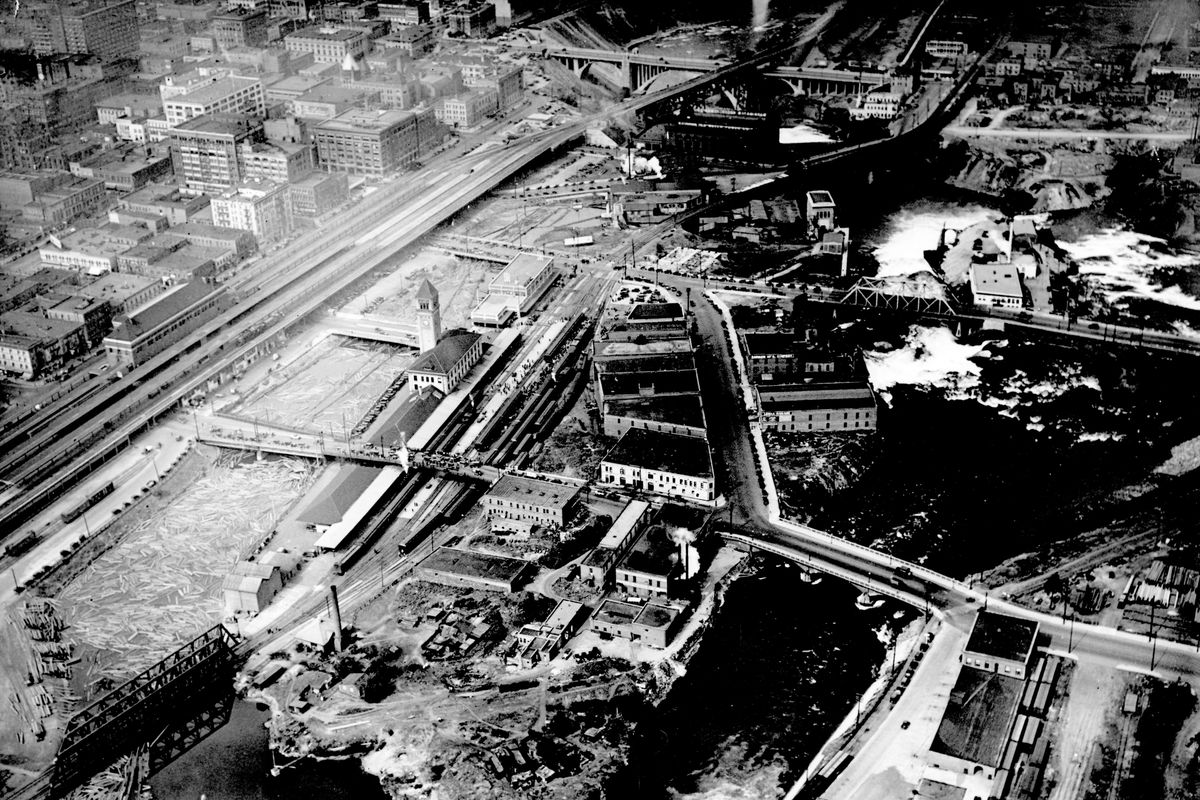Then & Now: Havermale Island

The Rev. Samuel Havermale was a Methodist preacher, adventurer and businessman. He was born in Maryland in 1824 and educated in Ohio and Illinois. He married Elizabeth Goldthrop in 1849, and after 24 years as a pastor in Illinois, the couple accepted a transfer to Walla Walla in the Washington Territory.
While riding to Colville on a visit, the preacher stopped and gave a sermon in the tiny settlement of Spokan Falls in May 1875. He fell in love with the waterfalls and prairie lands around them.
In November of that year, Havermale moved his family to Spokan Falls – the original spelling – and filed a homestead claim on 120 acres that included the islands in the middle of the Spokane River, where he intended to live. The Havermale family was one of the first five white families in the town.
In the spring of 1877, the few dozen residents of the town by the falls heard that the Nez Perce Tribe was preparing for battle. The nearby Indian tribes had been brutally defeated by the U.S. Army at Four Lakes, near Cheney, in 1858. And after the Army slaughtered the horses of the Spokane, Coeur d’Alene and Palouse tribes, the settlers were mostly left alone.
But the Nez Perce had killed settlers in the Salmon River area of Idaho and were still sending out raiding parties. The Spokane settlers were afraid some of the local tribes might join a raiding party. So everyone in Spokan Falls fell back to Havermale’s island, where the wooden bridge over the river’s south channel was the only access. Other frontier families sought refuge there and a contingent of soldiers camped nearby. But no direct attack ever came. Other Army units were sent after Chief Joseph and his Nez Perce warriors in the Bitterroot Mountains that fall.
After the “Indian peril” faded, Havermale built Spokane’s first Methodist church in 1879 at the corner of Sprague and Washington. He preached there for a couple of years, then left the pulpit and built a flour mill, which eventually would grind hundreds of barrels a day. The former minister was on the first city council in 1881.
Havermale also sold his real estate on the island. Some of the land went to the Great Northern railroad, which first crossed the island in the 1890s to stop at James J. Hill’s Great Northern depot. Havermale’s land became warehouses, factories and garages from the time of the first railroad tracks until all was removed for Expo ’74.
The legacy of heavy industry on the island has been in the news recently. The committee overseeing the Riverfront Park redesign will try to tap state funds to clean up soils throughout the park that may carry pollution from the former businesses.
Havermale died in 1904.
– Jesse Tinsley